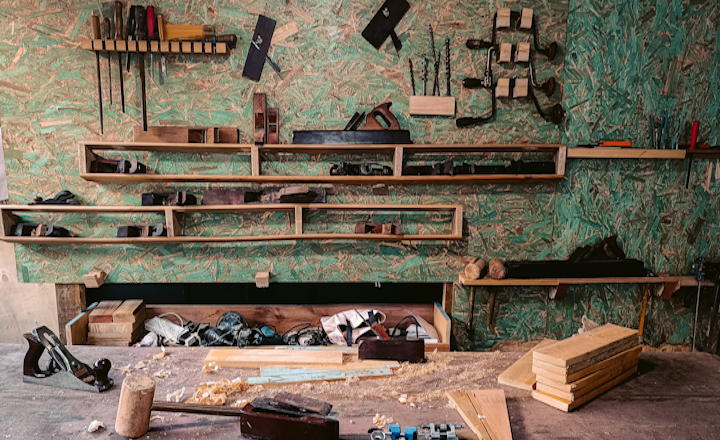
Toolbox talks are a staple on any building site. You gather the team, run through the day’s high-risk activities, PPE requirements, and safety checks. Everyone nods, and then it’s back to work. But there’s one conversation that rarely gets raised—until something goes wrong.
We’re talking about what’s inside the concrete you’re cutting, drilling, or fixing into. The hidden hazards in slabs, walls and ceilings that don’t show up on surface inspections but can derail a job in seconds.
This article takes a realistic look at why these risks are so often overlooked, the types of issues that can arise, and what can be done to manage them before they become a problem.
Why This Talk Isn’t Happening
Most safety discussions on site focus on what you can see: heights, live wires, manual handling, plant equipment. It’s understandable. Those risks are immediate, visible, and have clear procedures around them.
But what about when the danger is embedded in the structure itself? You can’t spot a post-tension cable running through a slab with your eyes. You won’t know there’s a high-voltage conduit behind that wall unless it’s been clearly marked. And even on newer sites, documentation doesn’t always reflect what’s actually been installed.
The risks are real—but because they’re hidden, they’re often assumed to be low-probability. That assumption is what leads to accidents.
Common Hidden Hazards and How They Cause Problems
Here’s a breakdown of the most common internal risks you’re likely to find in slabs, walls and ceilings—and why they matter.
1. Post-Tension Cables
These high-tension steel cables are under enormous stress. Accidentally cutting one can:
Create a sudden, violent recoil that can injure workers
Severely damage the structural integrity of the slab
Require costly engineering assessments and urgent repairs
On commercial sites or apartment builds, striking one is a serious safety incident. Even experienced workers can misjudge the location without proper tools.
2. Electrical Conduits
Hit a live cable during drilling or coring, and you’ve got a high-risk electrocution hazard on your hands. Even if the worker isn’t injured, it can:
Trip circuits and shut down parts of the site
Damage critical systems (e.g. lighting, data, alarms)
Delay follow-on trades while repairs are done
In older buildings, wiring may not follow current standards or might have been patched together during previous works—making guessing even riskier.
3. Plumbing and Fire Services
Pipes running through slabs or walls are often placed after the formwork goes in, meaning they don’t always show up in original plans. Striking one can cause:
Water or sewage leaks through multiple levels
Delays while the area is dried, repaired, and retested
Rework for other trades affected by water damage
Fire system pipes carry their own risks—some are pressurised or tied into alarms that halt work across the site if breached.
4. Rebar and Structural Steel
Drilling into rebar isn’t usually dangerous, but it can:
Compromise the strength of the slab
Ruin drill bits and slow down work
Void certifications or trigger engineering red flags
In structural walls, damaging steel reinforcement may require patching, x-raying, or a change to the fixing location—all of which burn time.
5. Voids, Debonding and Defects
Concrete isn’t always poured perfectly. Internal voids, honeycombing, or delamination can mean your fixings won’t hold as expected. This can lead to:
Anchors pulling out under load
Fixtures cracking or damaging finishes
Safety risks if items fall or shift over time
You won’t know until it’s too late—unless you’ve checked.
“I’ve Done This a Hundred Times” – The Risk of Assumption
One of the most dangerous habits on site is relying on experience alone.
It’s true—most of the time, nothing goes wrong. You drill a core, install the anchor, move on. But that pattern builds false confidence. It only takes one hidden conduit or tensioned cable to cause a serious incident. And the more experienced the team, the more likely they are to assume the risks are low.
That’s why this topic rarely comes up in toolbox talks: people think they already know what’s behind the wall or under the floor. Until they don’t.
Why Toolbox Talks Should Include These Hazards
You don’t need to turn every morning briefing into a scan lesson. But there are simple ways to bring awareness to what’s hidden behind the surfaces:
Ask: “Is anything being drilled, cut or fixed today?” If so, has it been scanned or cleared?
Don’t assume new builds are safer. Mistakes happen in fresh pours too.
For ceiling or wall work, confirm service routes and check for updated as-builts.
Include GPR operators or scanning techs in pre start meetings when relevant.
Even a five-minute chat about what’s in the concrete—rather than just on it—can prevent serious incidents. You can also use dial before you dig to greatly lessen the chances of an incident occurring.
Scanning Is the New Safety Standard
Concrete scanning isn’t about covering yourself when something goes wrong—it’s about avoiding the problem entirely. It’s quick, non-destructive, and more accessible than ever.
By factoring it into your planning and toolbox talks, you:
Improve worker safety
Avoid costly service strikes
Maintain project timelines
Reduce the likelihood of variations or disputes
And you set a standard that others on site can follow.
Wrapping Up
Every site has its risks—but not all of them are visible. When workers are drilling, coring, or cutting into slabs, walls or ceilings, they’re putting trust in what they think is behind the surface.
That’s why this toolbox talk matters. It’s not about scaring the team—it’s about making hidden risks part of the conversation, just like working at heights or electrical lockout procedures.
Because when you know what’s behind the slab, you’re not just avoiding problems—you’re keeping the job moving, safely and on time.
| < Prev | Next > |
|---|




